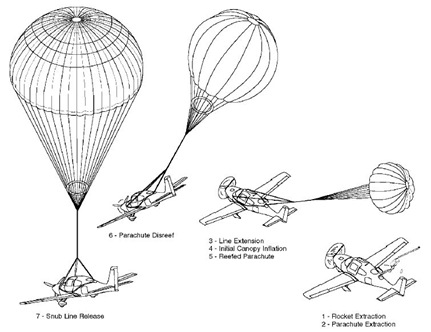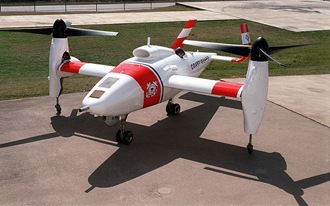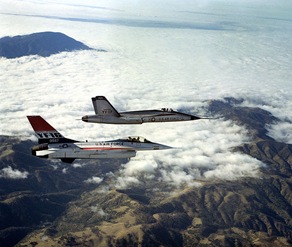Overheard on an American Airlines flight into Amarillo, Texas, on a particularly windy and bumpy day. During the final approach, the captain was really having to fight it. After an extremely hard landing, the flight attendant came on the PA and announced: "Ladies and Gentlemen, welcome to Amarillo. Please remain in your seats with your seatbelts fastened while Captain Kangaroo taxis what’s left of our airplane to the gate!"
Tips and secrets for passing your checkride
Jason Schappert has created a short six minute video containing his tips and secrets for passing a private pilot checkride. These tips and secrets included the following:
- Know Your Cross Country. Jason emphasized that you should be able to explain true course, magnetic heading, magnetic course and course heading as well as how you calculated any numbers you come up with while navigating or calculating a course. He also noted that you should not only know the frequencies from the airport you are flying from and the airport you are flying to, but you should also know the frequencies of any airports in between. Moreover, Jason also noted that your examiner may divert you to an airport you have never been to and hence, you should be familiar with the layout of all airports in your area.
- Have a Backup Plan. Jason mentioned that your examiner or even ATC may divert you from a planned course. Hence, you should have a backup plan ready or better yet, more than one backup plan or route plan to use.
- Special Emphasis Areas. Jason then listed about 10 topics that are almost guaranteed to be asked on your checkride. Hence, you should probably know these topics and be prepared to be asked about them.
- Navigate the FAR/AM. Jason also emphasized that while you are not expected to know everything in the FAR/AM, you will need to at least know how to look things up.
Keeping the above tips and secrets in mind will go a long way towards helping you to pass your private pilot checkride and not be caught off guard by the examiner.
Sharing airspace with Unmanned Aerial Vehicles (UAVs)
Unmanned Aerial Vehicles (UAVs), also known as Unmanned Aircraft Systems (UAS), will increasingly find their way off of the battlefield and into civilian airspace as interest in their use for homeland security, law enforcement, weather studies and for other purposes steadily increases. In fact and for Fiscal Year 2009, there were about 20,000 UAV flights and more than 2,500 hours logged in civilian airspace.
Hence, a recent article by Charles Spence for General Aviation News about sharing airspace with UAVs is well worth reading. Charles noted that safety is a major concern for everyone – especially with the use of drones since unlike other other types of UAVs which are remotely controlled by someone on the ground, drones are programmed to fly a particular mission.
However, Charles noted that a number of government agencies in the USA are currently trying to resolve just how to integrate UAVs into the national airspace system and the FAA hopes to publish a proposed rule by next year. Moreover, the National Association of State Aeronautic Officials (NASAO) and the Aircraft Owners and Pilots Association (AOPA) are concerned about how much airspace will be restricted and set aside for UAV flights. In fact, the AOPA is insisting that the rules for UAVs must be the same as the rules for VFR operations.
Meanwhile, Charles also mentioned that the National Business Aviation Association (NBAA) wants to make it certain that there is a reliable assurance of separation when both manned and unmanned vehicles start to mix in the airspace. However, the NBAA also sees a future where manned and unmanned vehicles can safely mix provided that there is both a basic system to separate both types of aircraft and a failsafe back-up system.
Nevertheless, Charles concluded his article by noting that everyone wants to get things right the first time around as “the uproar when two piloted aircraft collide is nothing compared to public, local, state, and federal government outrage if an unmanned vehicle brings down an aircraft with a pilot, and perhaps others, on board.” Points well taken.
When and where should you use the Cirrus Airframe Parachute System (CAPS)?
John Fiscus, the Chief Pilot of The Flight Academy, has written a great article for the Cirrus Owners & Pilots Association (COPA) blog about when and where you should pull the red handle and use of the Cirrus Airframe Parachute System (CAPS) instead of just troubleshooting. John began his article by noting that there have been a number of accidents involving Cirrus Aircraft that occurred while the aircraft was low. Hence, the majority of pilots in such incidents had little time to react. However and in the cases where they did act fast enough to deploy their CAPS system, they did so with great success.
John then noted that unless a pilot has a very specific and well-trained set of tolerances for using CAPS, it’s a strong possibility that the pilot will not go for the chute until after its to late. In other words, pilots often:
- Don’t have an established procedure (or don’t know it).
- Don’t practice the established procedures very often.
So when and where should you use or consider using CAPS? John noted the following three situations:
- In some takeoff zones where using CAPS isn’t a particularly good option, it should be used quickly and in lieu of troubleshooting – especially below 2,000 AGL.
- In some situations when not necessarily close to the ground. John mentioned situations where there is loss of control in flight or a loss of an engine.
- In any emergency situation, a pilot should first ask himself whether CAPS should be used. If the answer is no, then a pilot should proceed with the appropriate emergency checklist and then reconsider CAPS if all else fails.
John ended his article by noting that after 23 deployments, it is clear that CAPS will save lives if pilots are both trained and willing to use it.

Avoiding military flight activity
John Ewing has recently written an interesting post on Aviation Mentor about a topic that is not written about very often: How to avoid fast moving military aircraft activity. He began his post by noting an incident that involved an Air Force F-16CG colliding in mid air with a Cessna 172 over Florida. The Air Force pilot was able to eject from his aircraft with only minor injuries but the Cessna pilot was not so fortunate and he ended up loosing his life.
John then wrote about the following three keys to safely sharing airspace with fast moving military aircraft:
- Understand what is regulatory and non-regulatory airspace. This includes special use and other airspace.
- Know where military aircraft are scheduled to be operating.
- Recognize the limits of "see and avoid.”
John also wrote more in-depth about the limits of “see and avoid” and he noted that most traffic collision avoidance is accomplished using this technique. However and in the case of the collision between the F-16 and the Cessna, the closure rate between the two accident aircraft was just over 20 seconds between the time that ATC received a conflict alert and when the impact occurred.
Ironically though, the biggest single factor that caused the collision was that it occurred inside Class C airspace where the Cessna pilot least expected to encounter fast moving fighters. In fact, the F-16 was involved in a training exercise and was actually off course by several miles. In other words, you should always be prepared for the unexpected when you are up in the sky.
How to get back into the cockpit again
Getting back into the cockpit after a long flying hiatus can be a little intimidating. Hence, a recent post by Chris Findley on the Let’s Go Flying Blog is well worth reading as he noted that when he works with people who have taken a break from flying, he has found that the longer the break, the more apprehension the person has about recouping their flying knowledge and skills. He then wrote that he knows what he is talking as he was in the same position himself once.
In fact, Chris had a 15 year break from flying. It wasn’t until he received a copy of Plane & Pilot’s Annual Guide to Aviation Careers by mistake before he caught the flying bug again. He then went out and found a great flight school with a patient instructor who helped him get off the ground again.
Hence and from his experience, Chris has the following advice that is well worth noting by anyone thinking of returning to the cockpit:
1.) You will remember more than you think!
2.) You’ll fly better than you imagined.
3.) They’ll be more to learn and more airwork to be done.
4.) Don’t let the jitters get to you.
5.) Be patient.
Chris ended his post by mentioning that AOPA’s "Getting Back into Flying" site is an excellent source of information for anyone who is interested in returning to the sky.

